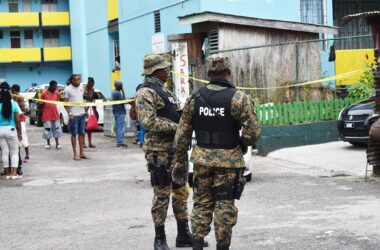THE situation facing the National Housing Corporation (NHC) today with the occupants of its few remaining dilapidated and uninhabitable La Clery residential flats was like an accident waiting to happen. After all, successive administrations have taken turns sidestepping urgently-needed actions to repair and/or renovate, rebuild and/or relocate the severely-dilapidated structures.
Ditto the apartments on Jeremie Street.
Both sets were built by the Colonial Development Corporation (CDC) following the 1948 Castries Fire that had left thousands homeless (which is how the Bachelors’ Quarters at La Clery and family apartments in Castries came to be called ‘CDC buildings’).
Historically, the ever cash-strapped NHC (by all its earlier names) has had to struggle against great odds to find cash to provide maintenance services for these properties, where tenants were traditionally lax in rental payments and government funding allocations always deemed insufficient.
The NHC sees the protesting La Clery occupants as squatters and is treating them as such. It claims they include some who earlier accepted relocation sums of $10,000 each and the corporation has now taken legal action to cover (or recover) additional costs incurred with a private contractor on the site.
The court will decide on the merits of this particular case. But whatever the verdict, declining social conditions will continue to persist in all the affected communities, until and unless a Government of Saint Lucia decides to take a long-term approach to the series of associated problems resulting from continued bad planning.
It all boils down to successive administrations having failed to develop an adequate national housing and urban development plan.
The major political parties normally promise ‘affordable housing’ in their election manifestos, but no recent administration has found the ways and means to plan and implement an adequate housing program for the expanding city – whether affordable housing for those living in squalor or discomfort, or comfortable housing for those who can afford.
The 70th anniversary of the 1948 Fire was observed this week. However, in the seven decades since, plans have yet to be developed to even start addressing the problems facing the city today arising from the acute rural-urban shift over the decades that has resulted in over 40% of the island’s total population concentrated between Castries and Gros Islet.
Just as different folks have different strokes, different administrations have different approaches to development.
Unfortunately, however, in our part of the world gubernatorial policy continuity hardly follows regime change. As a result, urgent social needs (like comfortable and affordable housing) suffer more from abrupt stoppages and policy changes, instead of being afforded the necessary time for sound planning and implementation.
The ‘CDC’ problems (in La Clery and Castries) didn’t start today — not even yesterday. The respective MPs over the decades since independence can all be accused of having taken turns playing political football with the issue, none wishing to risk losing any of the electoral capital that would vanish with relocation.
Seventy years after the fire that caused the construction of the ‘CDC’ buildings, it’s time to construct a new and adequate housing plan for the city (and the country). This time, however, when climate resilience is another real factor to consider, it must not be again hastily crafted as a result of another catastrophe – whether Man-made, or an Act of God. Instead, it must be a good plan that’s well thought-out.
Nothing beats a good plan, which is what’s lacking presently. But then, how far ahead can planning go in societies where people and governments seem to have grown accustomed to changing their minds and priorities every five years?
We’ll definitely see.












